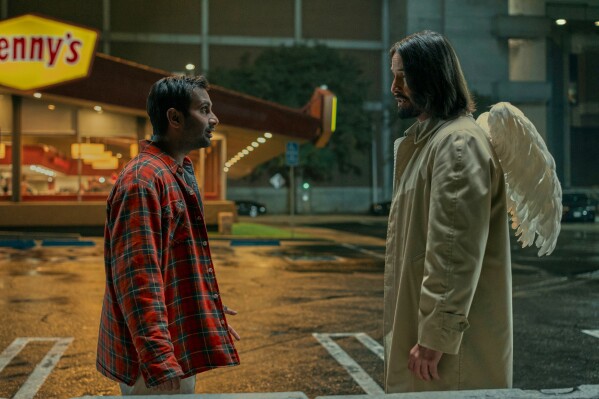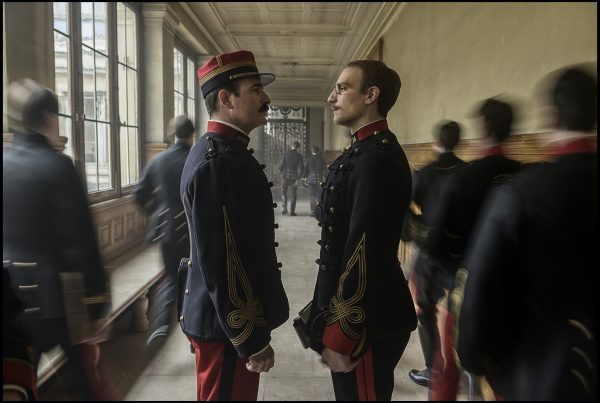Paul Thomas Anderson’s “Inherent Vice,” which opens Friday, is a detective movie, but we’re a long way from Sam Spade, leggy blondes and chiaroscuro lighting. It’s set in Los Angeles in 1970, and private eye Larry “Doc” Sportello (Joaquin Phoenix) is a holdover from the Summer of Love, a perennial stoner in an increasingly sober time. If Phoenix’s goal as an actor is to out-weird his previous roles, he’s achieved it here, shambling through this meandering film in a druggy haze, boasting sideburns that take up a quarter of the frame.

He seems to be pretty terrible at his job, yet clients—and answers—continue to disrupt his highs. First, it’s his ex-girlfriend Shasta (Katherine Waterston), who wants Doc to find her missing beau, a sleazy (and married) real estate tycoon named Wolfmann (Eric Roberts). This leads Sportello down a serpentine maze of rabbit holes involving a disgruntled gang member (Michael K. Williams), a burnt-out saxophonist-turned-FBI informant (Owen Wilson), a corrupt dentist (Martin Short) and a “vertically integrated” Asian drug syndicate. Helping the good Doc decode this Rubik’s cube of a mystery are Christian “Bigfoot” Bjornsen (Josh Brolin), a blocky cop with whom Doc maintains an uneasy kinship; Penny Kimball (Reese Witherspoon), an assistant D.A. and sometime lover; and Sauncho Smilax (Benicio del Toro), his incompetent lawyer.

Despite its star-studded potential, it’s hard to think of another film in recent memory that disdains its audience as doggedly as “Inherent Vice.” Adapted from the novel of the same name by Thomas Pynchon—a lightweight 2009 work that, compared with other writers, is still dense, interior and difficult-to-film—Anderson perches this head-scratching comedy somewhere between film-noir homage and parody, and the film rarely succeeds at either approach. It’s more an anti-noir, an overplotted tangle whose resolution is beside the point and beyond our capacity to care. Each introduced plot element is another example of misdirection as direction. Conversations proceed in mumbles, codes and whispers, with zestfully named characters sharing secrets to which we are not privy. Understanding “Inherent Vice” is a fool’s errand. We’re supposed to succumb to Doc’s shaggy process and just enjoy the ride.
The problem is, the ride needs to be enjoyable, and at two and a half hours, “Inherent Vice” is an interminable slog—a somnambulistic opiate that requires, perhaps, an audience that’s as baked as its protagonist. Anderson has said that Cheech and Chong movies were a major influence, along with such overstuffed spoofs as “Airplane” and “Police Squad!” But I could count the number of times I laughed on fewer than two hands, and they were embarrassing, skuzzy laughs elicited from broad and degrading visual conceits.
Speaking of the visuals, Anderson’s painterly approach to his mise-en-scene is as exacting as ever, but it’s largely at the service of indulging in the same kind of excessive ‘70s fetishism that colored the canvases of “American Hustle,” another overrated period piece. Seeing the bottomless parade of Hollywood stars cast against type or in surprising milieus eventually becomes the only impetus to keep watching “Inherent Vice,” a disaster of monumental time and expense from a filmmaker that should know better.







